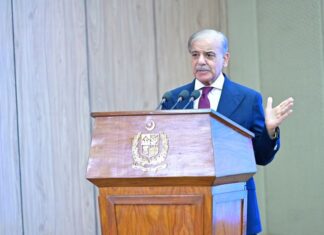Pakistan secured $1.308 billion from multiple financing sources during the first quarter of FY 2024-25, down sharply from the $3.527 billion borrowed in the same period last year.
The figure excludes $1.03 billion received from the International Monetary Fund (IMF), which would push the total to $2.338 billion, according to data from the Economic Affairs Division (EAD).
Despite ambitious targets, the government fell short in attracting deposits and foreign loans. Pakistan budgeted $9 billion in time deposits for FY 2024-25, including $5 billion from Saudi Arabia and $4 billion from China, yet no funds were received under these heads during the quarter.
Similarly, no assistance arrived from the UAE, reflecting slow progress on expected support from regional allies.
The government aimed to borrow $19.393 billion this fiscal year, consisting of $19.216 billion in loans and $176.29 million in grants. However, external funding inflows fell short of projections in Q1.
While Pakistan planned to raise $3.779 billion from foreign commercial banks, it received just $200 million, with the lending bank undisclosed. Additionally, the government budgeted $1 billion from bond issuances, but no bonds were floated.
Multilateral and bilateral inflows totaled $733.25 million during Q1. The Asian Development Bank (ADB) disbursed $114.3 million, falling short of the $1.651 billion earmarked for the fiscal year.
Meanwhile, the International Development Association (IDA) released $190.91 million, with the International Bank for Reconstruction and Development (IBRD) adding $86.16 million.
The Islamic Development Bank (IsDB) disbursed $62.17 million under short-term financing. China contributed $96.76 million in July, though no further inflows were recorded in August and September.
Pakistan received $374.79 million under the Naya Pakistan Certificate scheme, including $115.75 million in September alone, reflecting ongoing reliance on diaspora investments. Non-project aid amounted to $662.67 million, comprising $225.72 million for budgetary support and $436.95 million for other needs.
Despite securing some inflows, Pakistan faces challenges meeting its fiscal targets. With limited bond issuance and uncertain commercial borrowing, reliance on multilateral lenders and bilateral allies remains critical.
The absence of substantial regional support from Saudi Arabia, China, and the UAE raises concerns about future inflows. The government is under pressure to ensure timely disbursements, streamline aid processes, and develop alternate financing strategies to reduce the fiscal deficit.























